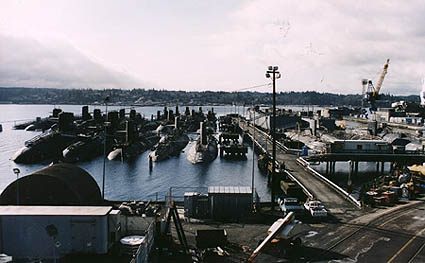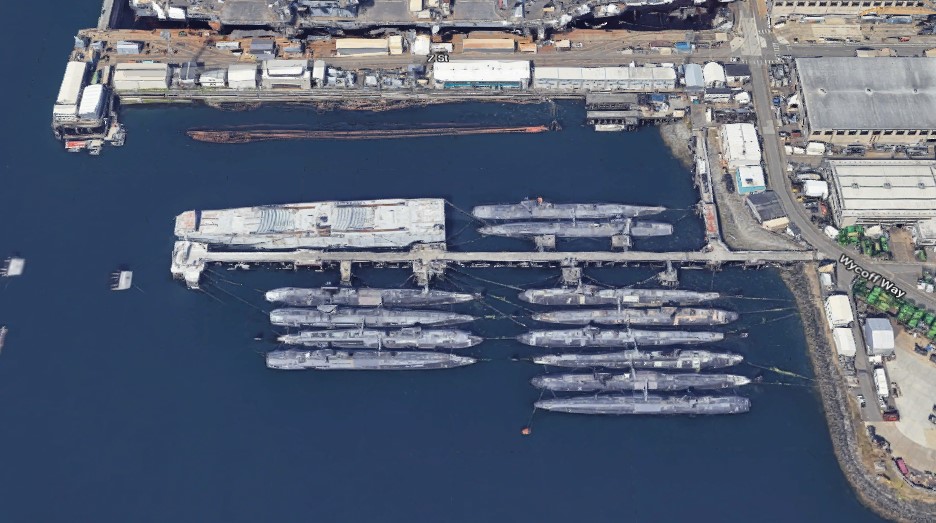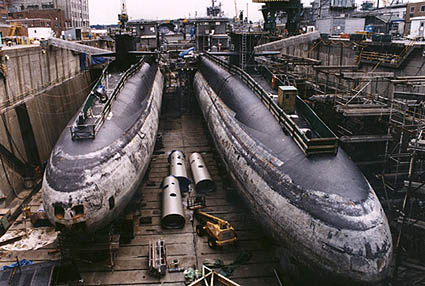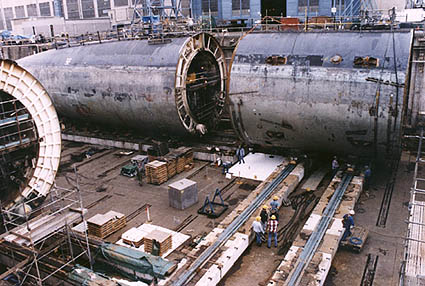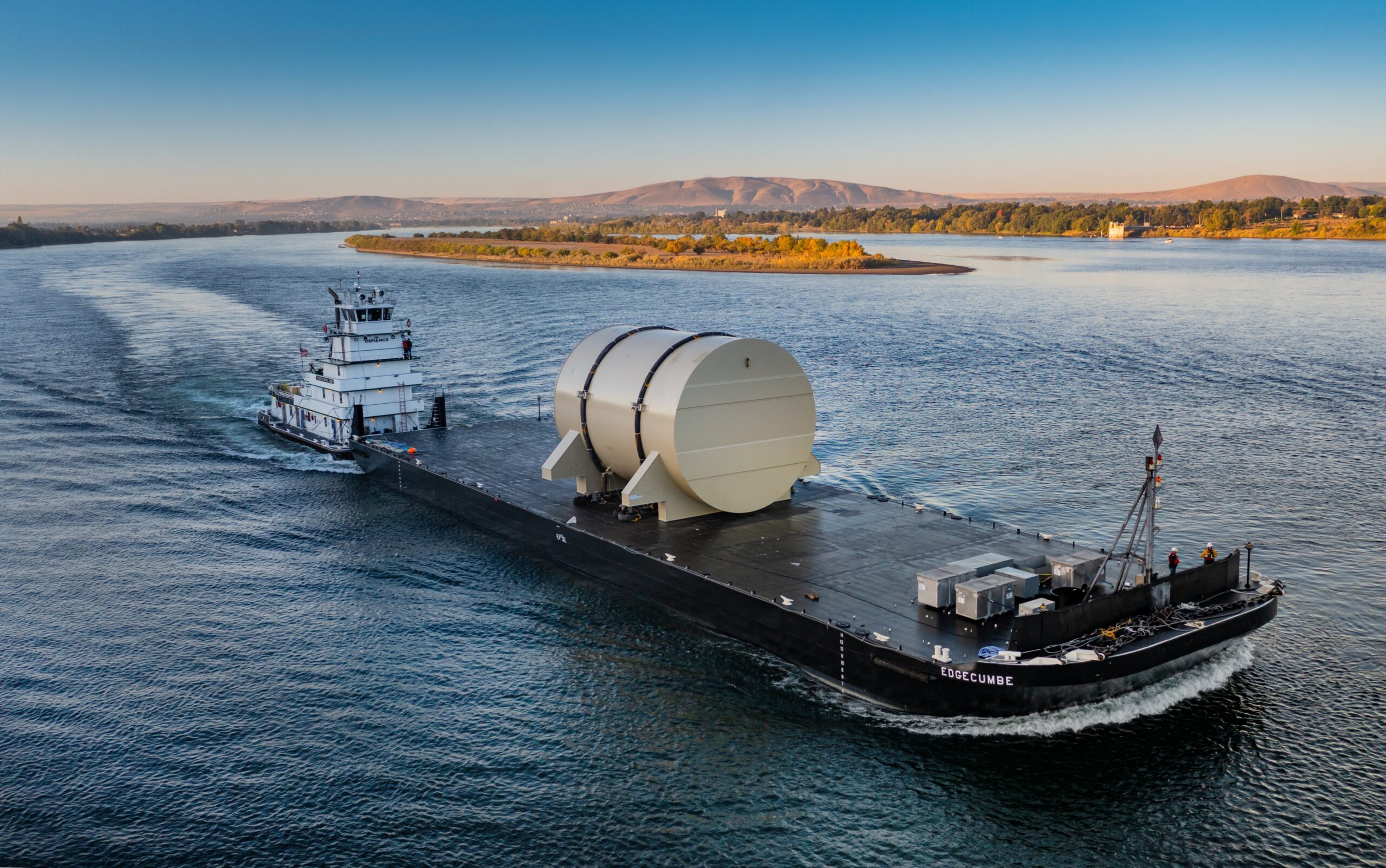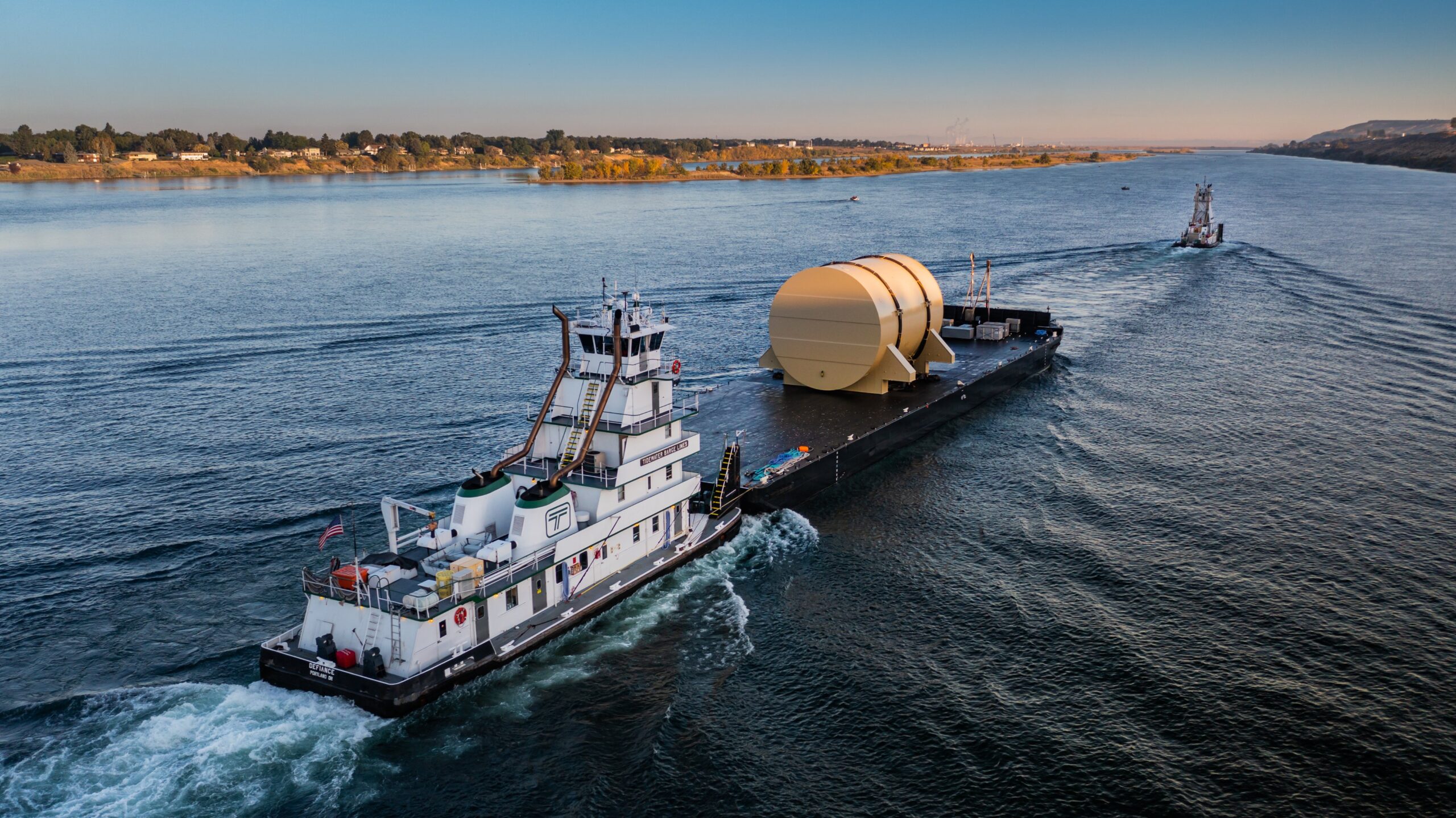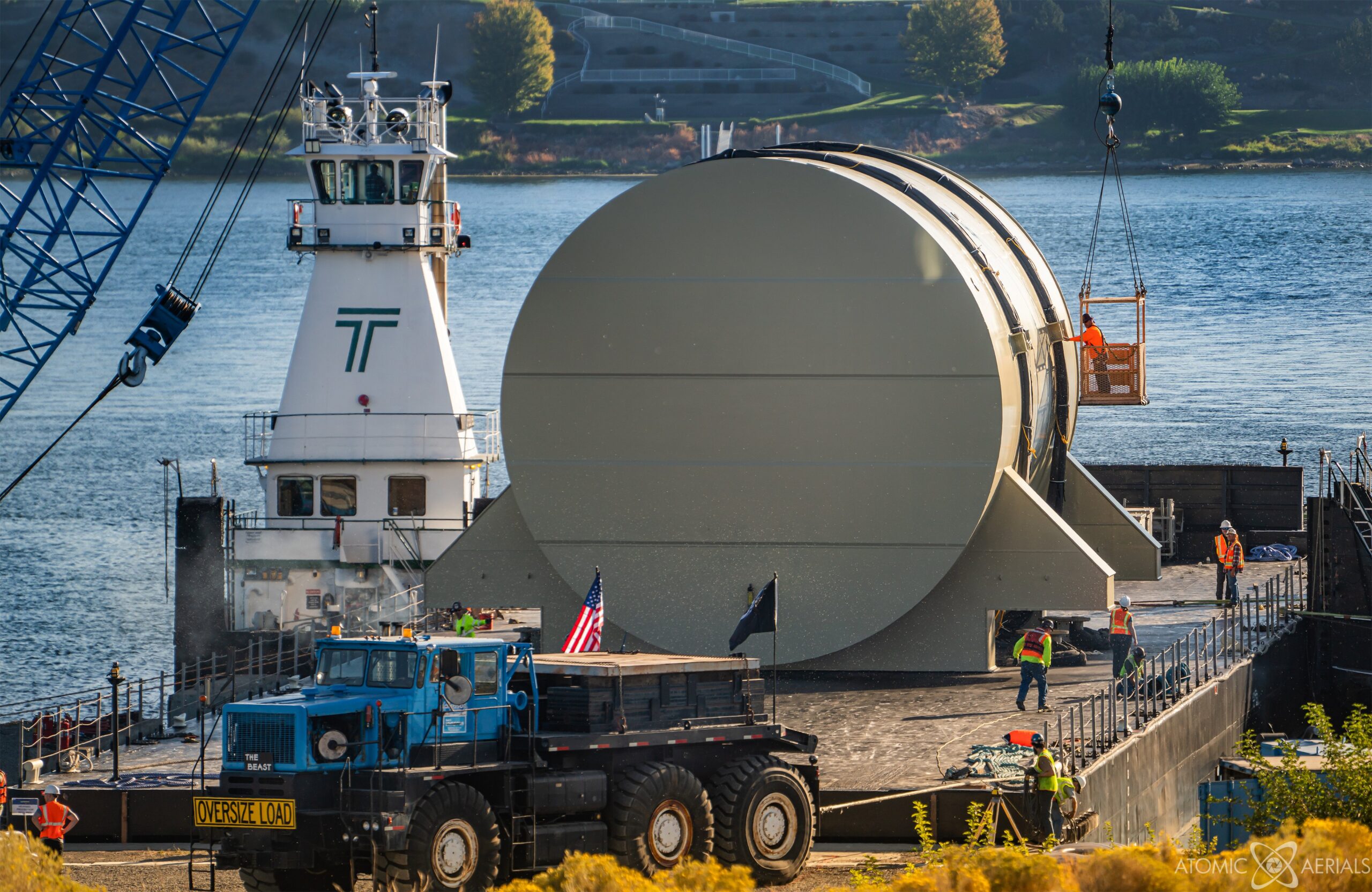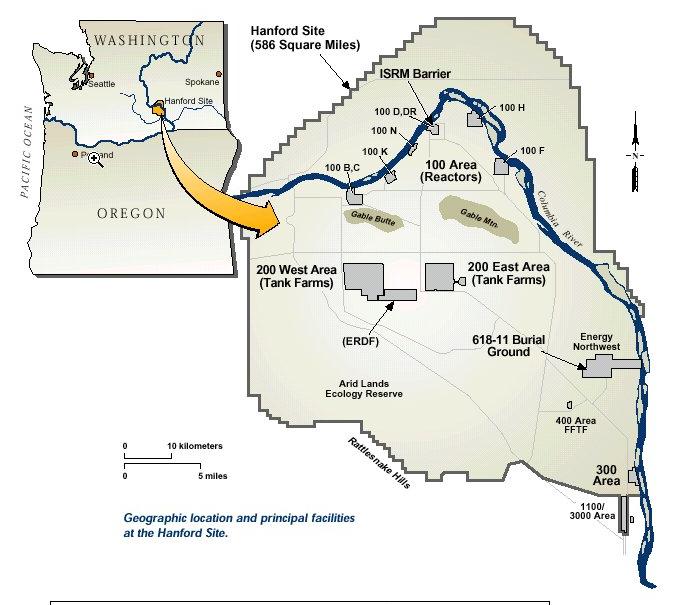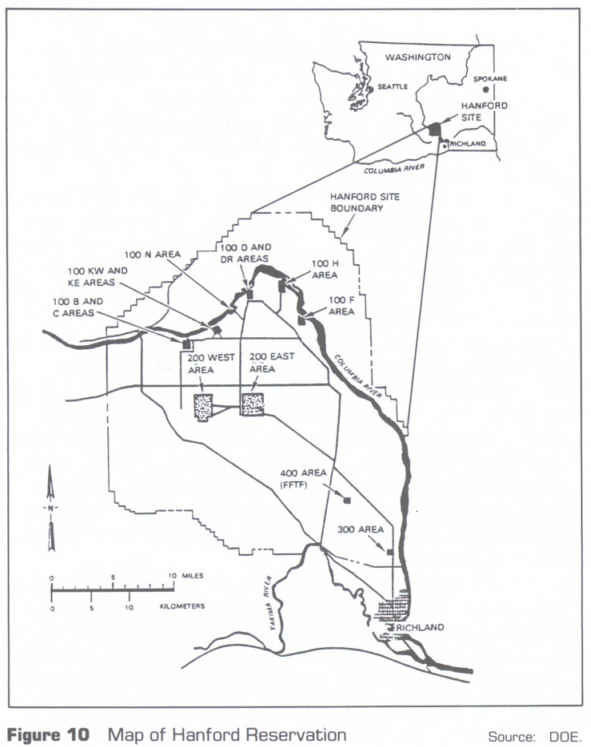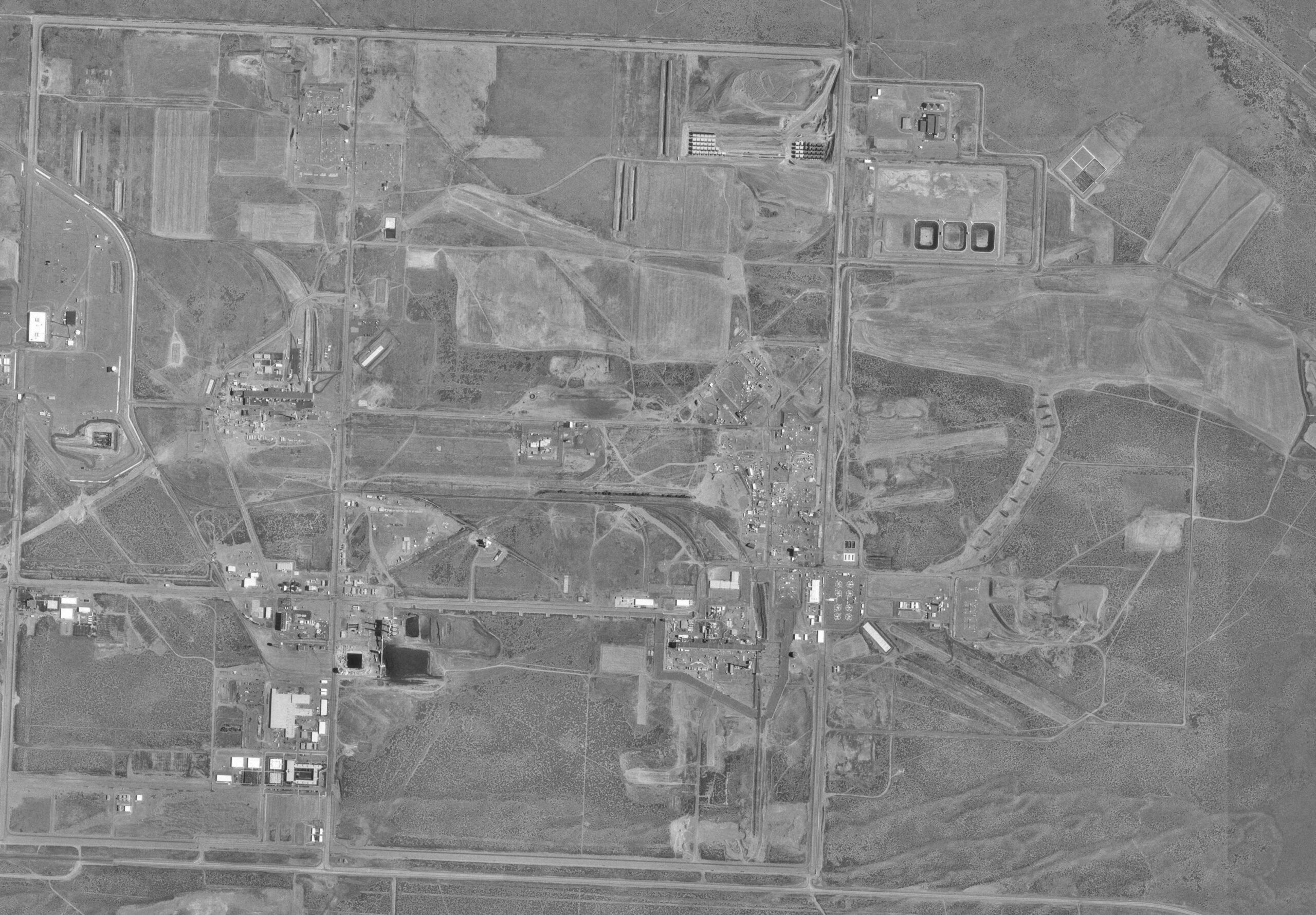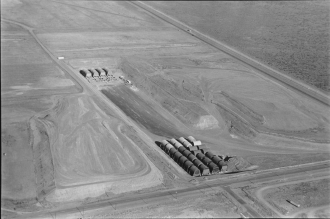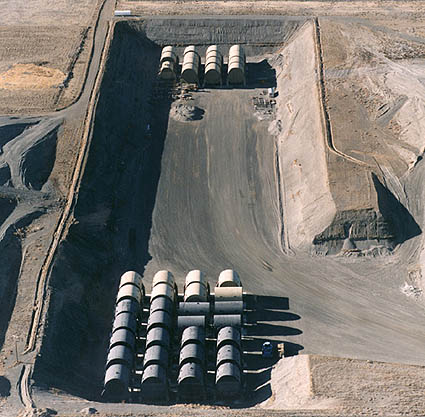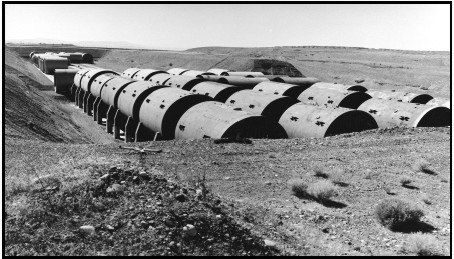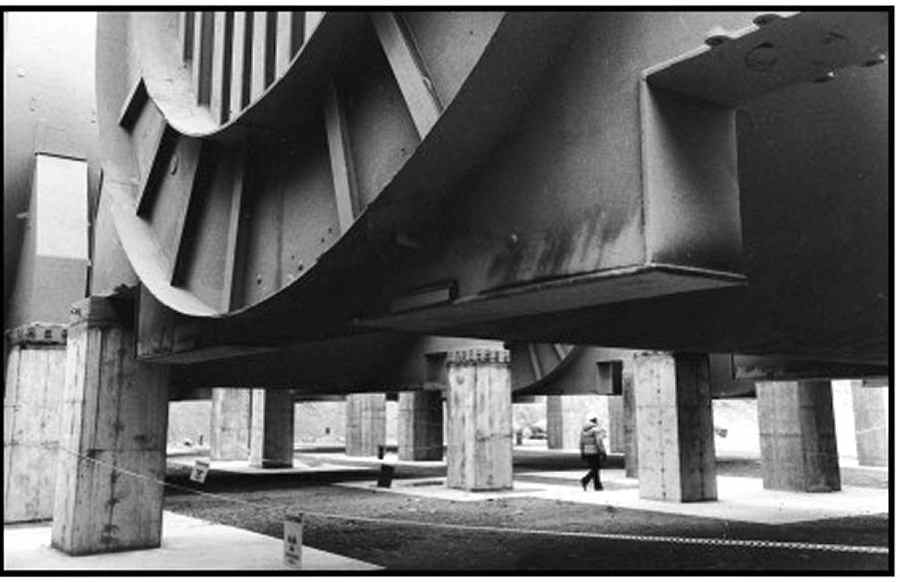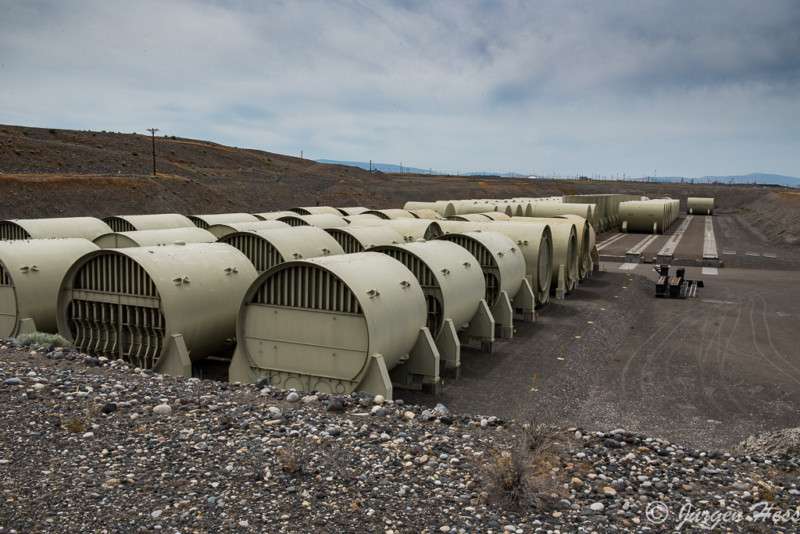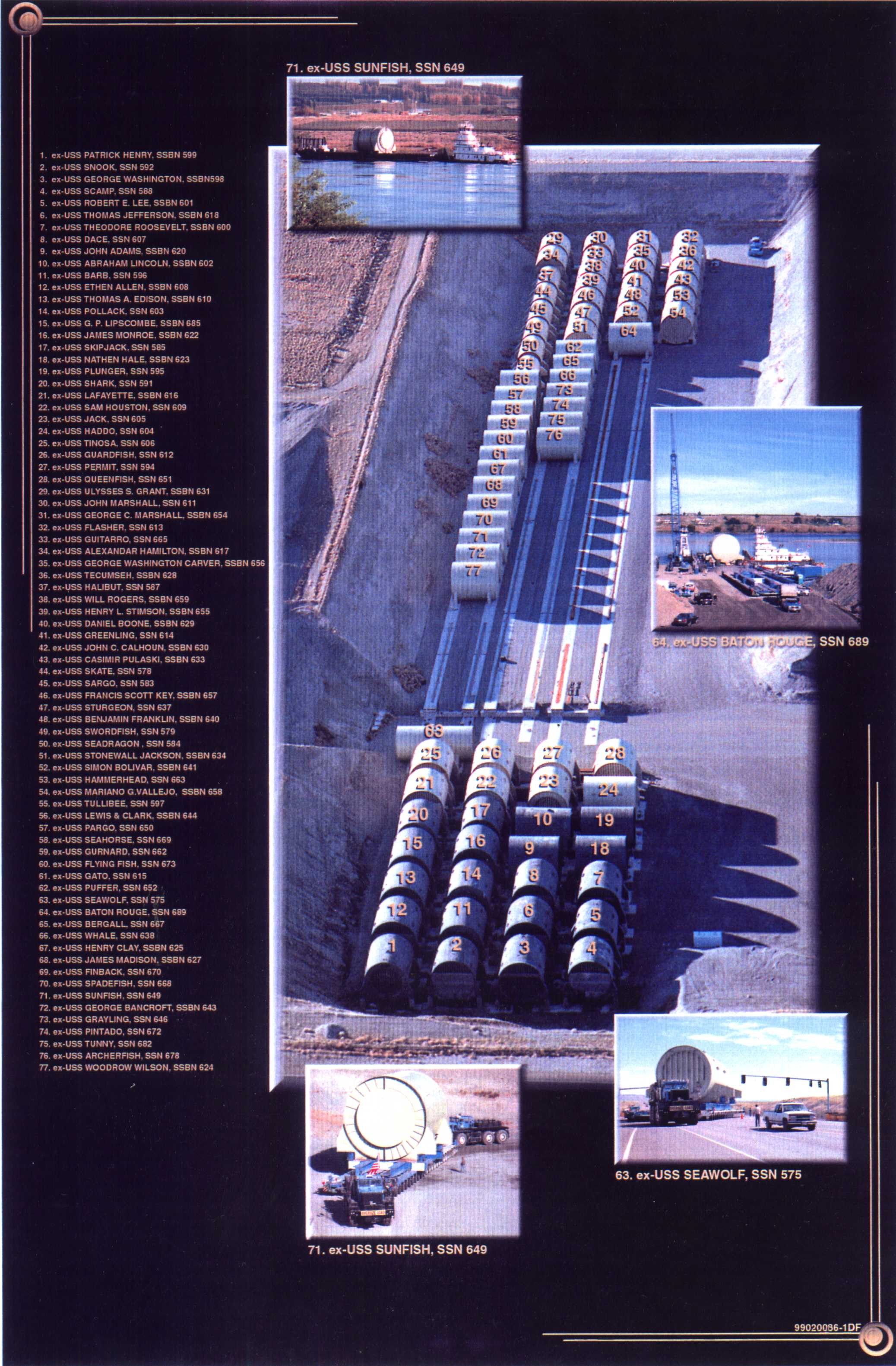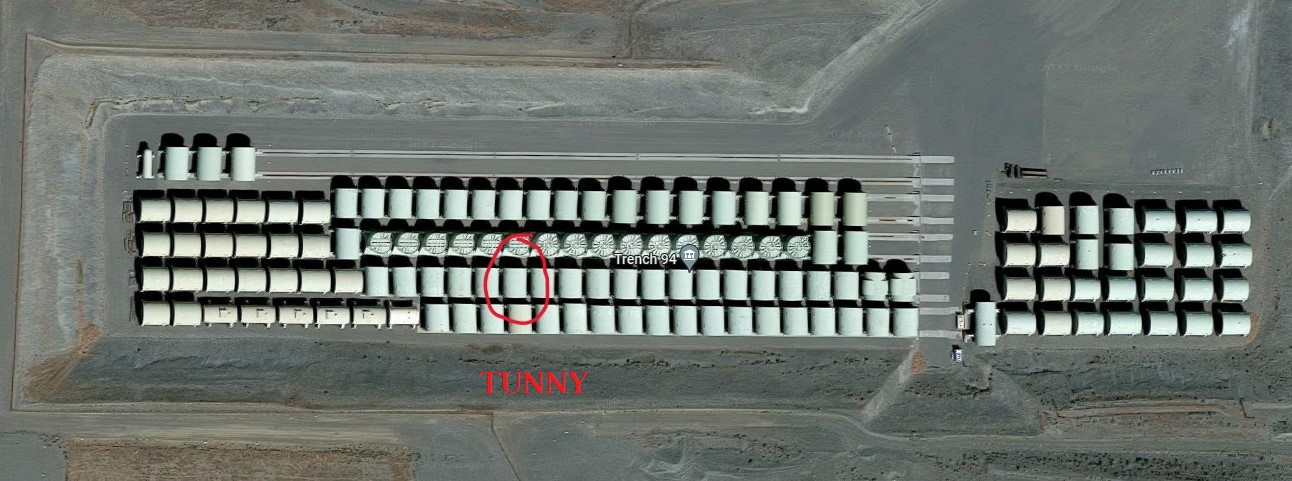Removing the Reactor Compartment from the submarine
Submariners are accustomed to the sight of a floating, mothball fleet. We have all seen the subs tied to a pier, without a power plant section, dead in the water, but ready to serve if the need arose. Recently, our government began completely recycling these boats, reducing them to steel for re-use. Not floating. This was the fate of many Cold War submarines, including TUNNY. No museum piece, no floating asset, these Cold War boats have disappeared from the face of the earth, as they did so many times into the ocean.
We all know that a boat enters drydock after decomissioning and that the center section (the Reactor Compartment) is removed and the unused fuel is recovered. But I never stopped to consider that after de-fueling, the Reactor Compartment is treated like Low Level Waste (LLW in Radiological contamination terminology). So it is handled fundamentally differently than the rest of the boat. Since it is rad waste, and now seperated from the ship, it leaves the dry dock, and is not recycled.
More than twenty attack and ballistic missile submarines awaiting dismantlement at Puget Sound Naval Shipyard in Washington state, March 13, 1996. The Navy dismantled more than 100 submarines between 1986 and 2000.
You can click on the photos to make them slightly larger.
As part of the dismantlement process, submarines are brought into drydock, where they are defueled, their reactor components are removed, and all usable equipment and materials are removed and recycled. All weapons are removed before this stage. This 1993 photograph taken at Puget Sound Naval Shipyard in Washington shows two ballistic missile submarines.
The spent nuclear fuel is removed before dismantlement begins.
A defueled reactor compartment (right) is shown separated from the rest of the submarine. Once separated, special steel bulkheads are attached to both ends of the compartment and welded into place.
After their radioactive fuel is removed, the compartments are classified as low level waste, and they are sealed off.
Sealed reactor compartments are shipped by barge out of Puget Sound, down the coast and along the Columbia River to the port of Benton. There the radioactively-contaminated hull sections are transferred to special multiwheeled high-load trailers for transport to the Hanford Reservation.
Click on the photos below for bigger images.
Managed by DOE, Hanford covers approximately 500 square miles of government owned land and is located northwest of the city of Richland, WA. In early 1943, the US Army Corps of Engineers selected Hanford as the location for reactor, chemical seperation, and related facilities involving the production and purification of plutonium. That’s what all those “reactor” references on the map are. But they aren’t talking about submarines. The Waste Management program operates disposal facilties at the 200 Area Burial Grounds. Almost everything I found on the internet about the Hanford Site was about the environmental impact of the site.
Hanford divides the entire site into sections 100, 200, etc. The 200 Area Burial Grounds are classified as a shallow landfill disposal facility. Shallow land disposal of solid waste has occurred at Hanford since the late 1940’s. The 200 Area burial grounds cover an area of about 1,050 acres, of which 550 acres is active. Submarine reactor compartments are stored in the “200 East” area.
The 200 Area landfill is divided into eight burial grounds: Two considered in the 200 East area, and Six located in the 200 West Area.
Burial Ground 218-E-12B began disposing wastes in trenches in 1962 and covers 173 acres. Waste contained in this burial ground includes Transuranic waste and low level waste. And TUNNY’s RC.
Here is a satellite map of the 200 East area. The official Hanford storage designation we are interested in is 218-E-12B. Inside the section, each specific storage area has a name. Reactor Compartments are stored in Trench 94. You can right mouse click this and open it in a new window and zoom around.
Trench 94 is near the top at 1 o’clock position.
Site Code: 218-E-12B
DOE Program: EM-30
Site Names: … includes 218-E-1: (several), includes 218-E-12B Burial Ground – trench 94
Site Type: Burial Ground
Site Status: Active
Start Date: 1967
Coordinates: (E) 574796.312 (N) 1374476.5 Washington State Plane
Site description: The burial ground contains 138 trenches running north and south. Sixty one of the trenches are 370 meters (960 feet) long, thirty one of the trenches are 293 meters long, and the remaining trenches vary. Trench 94 contains defueled US Navy submarine reactor compartments. The burial ground is marked and radiologically posted.
Waste Description: Trench 94 is oriented in an east-west direction. The reactor compartments are composed of various types of steel and approximately 392 tons of lead shielding.
Trench 94, Hanford Site, Washington, 1994. Hull sections containing defueled reactor compartments of decommissioned nuclear-powered submarines are put in disposal trenches. In 1986, the Patrick Henry’s hull section was the first one placed in Trench 94.
NOV 1994 – 43 Compartments stored
Trench 94 in the Hanford Reservation’s 218-E-12B burial ground (near the center of the site), raised onto support columns, and welded into place. In this November 1994 photograph of Trench 94, forty-three reactor compartments are visible and foundations are being prepared for a forty-fourth. Once full, the trench will be filled with dirt and buried. The compartments are expected to retain their integrity for more than 600 years.
A guy walking on the floor of Trench 94. July 1998.
Use of the thick steel submarine hull as a disposal provides extra isolation between the environment and the low-level waste and hazardous lead that remain after the spent nuclear fuel has been removed.
And, finally, here is the best picture I have of Trench 94. Each boat’s Reactor Compartment is labelled for reference. TUNNY is # 75.
References for this page:

